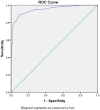Validation of the Arabic version of the Social Communication Questionnaire
- PMID: 30606031
- PMCID: PMC6728746
- DOI: 10.1177/1362361318816065
Validation of the Arabic version of the Social Communication Questionnaire
Abstract
Validated screening and diagnostic tools for autism spectrum disorder for use in Arabic-speaking individuals are scarce. This study validated the Arabic version of the Social Communication Questionnaire. The total study sample included 206 children with autism spectrum disorder and 206 typically developing children (73.8% male; mean age: 8.5 (standard deviation = 2.6) years). The mean Social Communication Questionnaire total score was significantly higher in autism spectrum disorder children than in typically developing children (p < 0.0001). Scores on the three Social Communication Questionnaire subscales also differed significantly between the groups (p < 0.001). Of the 39 items, 37 were endorsed significantly more often in the autism spectrum disorder group. The total Social Communication Questionnaire score did not vary by age or gender. Internal consistency was excellent (alpha = 0.92). In the receiver operating characteristic analysis, the area under the curve for the total score showed excellent discrimination between autism spectrum disorder and typically developing children (area under the curve = 0.95; 95% confidence interval: 0.93-0.97). The areas under the curve for the scale subscores were 0.923 (95% confidence interval: 0.898-0.949) for the social interaction score, 0.872 (95% confidence interval: 0.838-0.905) for the communication score, and 0.856 (95% confidence interval: 0.819-0.893) for the repetitive behaviors score. The findings support the use of the Arabic Social Communication Questionnaire to successfully differentiate children with clinically diagnosed autism spectrum disorder using the established cutoff value for the English version.
Keywords: Arabic; Social Communication Questionnaire; autism spectrum disorder; cutoff values; early intervention; epidemiology; screening; validity.
Figures


References
-
- Allen CW, Silove N, Williams K, et al. (2007) Validity of the social communication questionnaire in assessing risk of autism in preschool children with developmental problems. Journal of Autism and Developmental Disorders 37(7): 1272–1278. - PubMed
-
- American Psychiatric Association (APA) (2013) Diagnostic and Statistical Manual of Mental Disorders. 5th ed. (DSM-5). Available at: 10.1176/appi.books.9780890425596.744053 - DOI
-
- Berument SK, Rutter M, Lord C, et al. (1999) Autism screening questionnaire: diagnostic validity. The British Journal of Psychiatry 175(5): 444–451. - PubMed
Publication types
MeSH terms
LinkOut - more resources
Full Text Sources
Medical

